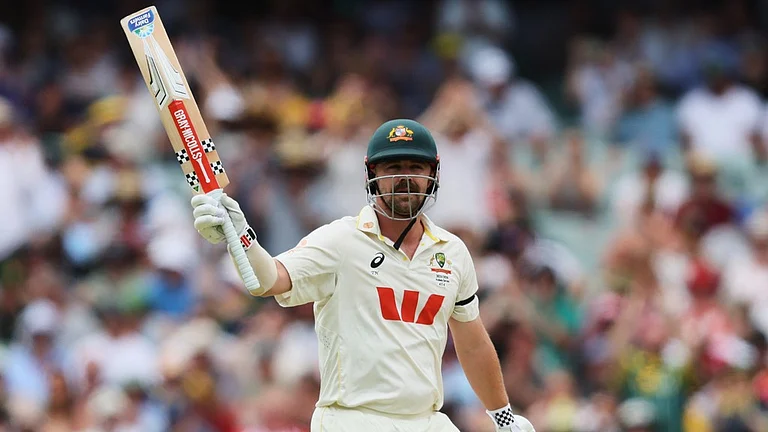What happened to the RIL scrip was shocking. Remember that stock prices had kept rising even when the two brothers were fighting. And after the truce, it had catapulted. But now, there’s a cloud of uncertainty that’s hanging over the stock. It’s what experts call "demerger dynamics" or "split swings". From January 18, the Mukesh-owned RIL will start quoting at an ex-demerger price, or one that’ll discount the value of its holdings in group companies such as Reliance Energy, Reliance Capital and Reliance Infocomm, which will go to younger brother Anil as part of the settlement thrashed out in June ’05. And no one’s sure how it’ll impact RIL’s scrip price.
Even the analysts are confused, each one doling out contradictory views over the past seven months. So we decided to help out the 35 lakh shareholders of the Reliance group and analyse whether the demerger will benefit them or not.
One thing is certain: RIL’s ex-demerger price will be considerably less than the one it ruled at the day before. The reason is simple. At present, the price includes the value of the company’s substantial holdings in group firms. When one applies the sum-of-parts calculation—or take into account the proportionate values of its operational divisions as well as those of its holdings—the scrip price, according to analysts, should be between Rs 700 and Rs 1,000. (Last Thursday, it closed at Rs 887.25.) But once Mukesh transfers RIL stakes in several group firms to Anil, the equation will change and the scrip price will plummet. Citigroup’s number-crunching shows that RIL’s ex-demerger price will be Rs 225-250 lower (see graphics). Angel Broking, which thinks "the cumulative value of the investments of RIL in the undertaking(s) to be demerged is approximately Rs 19,000 crore," estimated the price to be lower by Rs 197.60.
The next questions on your mind are likely to be: what will happen to RIL afterwards? Will the scrip go up or come down further? Is a focused RIL (without interests in unrelated businesses) better than the conglomerate that it was? Does RIL have the potential to grow aggressively in just the oil and gas and the petrochemicals sector? Will the split unlock value or depress it?
Most of Dalal Street feels the split is good for RIL. In the past, even Anil has maintained that RIL’s price rise has been less than that of the Sensex (comprising 30 stocks, including RIL) because of what he called the "conglomerate discount". Investors generally like companies that are leaders in a few fields and don’t spread their wings too wide. Over the past few years, many firms have shed unrelated divisions or merged entities operating in similar sectors. The management mantras in the 1990s were that of core competence and focus. For instance, the Tata group reduced its number of businesses from over 100 to 30. And Kumaramangalam Birla has merged several firms in the metals segment.
In its October 2005 report, Motilal Oswal Securities has stated that "value unlocking through demerger is likely to be the key near-term catalyst for (RIL) stock performance". Agrees another report (June 2005) by Refco Global Research: "We believe resolving the issue on control for the businesses would unlock value of the investments made by Reliance Industries in telecom and other businesses...it would help the managements of the respective groups (Mukesh and Anil) to focus on the business at hand. We expect Reliance’s valuation discount with the regional peers in its core business of refining and petrochemicals to narrow going forward." The last line implies that being a conglomerate, RIL was quoted at lower multiples than its regional (Asian) competitors, and that’ll change in the near future.

However, there are a few discordant notes. One firm that differed from the normal Street view was Goldman Sachs. In its June 2005 report, it stated that RIL "will become a cyclical commodity company after the demerger of its associates" and that "unless Reliance can scale up its upstream business meaningfully to impart stability to its earnings", the scrip price will suffer. It’s been established that prices of commodity stocks oscillate wildly, depending on the cyclical gyrations in the prices of its products. Most analysts feel that the commodity cycle, which has seen an upturn in the last few years, has almost peaked. Therefore, things can only turn bad in the near future. And that’ll impact RIL too.
In fact, all irregular changes have the capacity to impact its bottomline. For example, its Q3 net profits were below expectations due to several factors. First, as the company admitted, its refinery production was low due to a planned partial shutdown in October and November 2005. In the first nine months of this fiscal, the domestic demand for petroleum products came down by 1.1 per cent. In addition, the refinery margins in Q3 were down to $9.1 per barrel, compared to $10.4 in the previous one.
RIL’s Q3 expenses too were much higher and, according to some analysts, this may have been due to a one-time expense related to the split between the two Ambani brothers. Bloomberg reported that "other expenses" last quarter may have gone up by Rs 976 crore due to costs "incurred on separating its (RIL’s) phone, power and financial services businesses as part of a settlement...." Fund managers are still clueless about the details of these expenses. Finally, RIL’s "other income" was down in the first nine months of this fiscal, after the company converted its preference shares (which earned an attractive interest) in Reliance Infocomm wef April 2005.
Still, the Citigroup report quoted earlier is optimistic about RIL’s valuation, but it lists a few long-term risk factors. "RIL’s margins are exposed to the international petrochemical cycle and refining cycle. RIL could be made to give higher discounts on products sold to oil PSUs, which could impact profitability. New oil and gas discoveries have the potential for further upside (of scrip price), but are difficult to predict," it noted. Mukesh realises that the only way out is to play the volumes game, so that overall profits go up despite reducing margins, especially during a downturn in the commodity cycle. In addition, he knows that margins will be higher in upstream businesses (fresh discoveries and refining).
More important, RIL has to invest its huge annual cash flows in a judicious, speedy manner. At the RIL AGM in August last year, Mukesh unveiled a plan to invest Rs 50,000 crore over the next few years. This included doubling of the refining capacity at Jamnagar, which will become the world’s largest refinery at a single location, investments in oil and gas exploration, and expansion of petrochemicals units. As Mukesh disclosed at the AGM, "RIL’s cash flows over the next few years would be largely expended on the core oil & gas, refining and petrochemicals businesses."
While RIL attains a certain core competence, the company’s shareholders will continue to be part of the Anil-owned firms. The demerger stipulates that the existing investors will be allotted shares in Anil’s group firms (see graphics). Initially, they’ll get shares in a 1:1 ratio in new entities like Reliance Energy Ventures, Reliance Capital Ventures and Reliance Communication Ventures Ltd (RCVL). Later, the holdings in the first two will be converted into shares of quoted companies—Reliance Energy and Reliance Capital—in a ratio of 7:100 and 5:100 respectively. The stakes in Reliance Communication Ventures too will get listed once Anil decides to go in for an ipo.
Over the past few months, Reliance Industries shareholders have been excited by the prospect of getting extra shares. After all, their portfolio will expand and the scrip prices of Anil-owned firms have been rising in the recent past. In fact, each time there was a buzz about the imminent demerger, the RIL scrip shot up. In addition, many experts felt that there was excellent growth potential for Reliance group companies, as the brothers would make aggressive plans in a bid to outdo each other. This is exactly what has happened with Anil announcing a new plan every second day and Mukesh’s Rs 50,000-crore blueprint.
But some of the analysts were singing a different tune. Ironically, they contended that Anil’s new parent company, Anil Dhirubhai Ambani Enterprises (ADAE), may suffer from the same "conglomerate discount" syndrome that RIL used to be vulnerable to, prior to the demerger. The Goldman Sachs report quoted earlier stated, "...we doubt this (the split) will result in value unlocking for minority shareholders. In our view, NewCo (now named ADAE) may trade at a large discount to its underlying NAV (net asset value) given the large disparate nature of its businesses. We believe investors will be better off buying the stocks (of the Anil group of companies) individually based on their risk appetite and each entity’s growth prospects."
Anil realised this aspect quite quickly. Therefore, his demerger strategy will ensure that each of RIL’s shareholders gets shares in each of his entities—Reliance Energy, Reliance Capital and RCVL—which are clearly focused in specific sectors. The parent, ADAE, may continue to remain closely held by Anil, his family members, close friends and associates. In such a scenario, investors will retain the option of being shareholders in Anil’s group firms, or selling off their stakes to book profits.
It remains to be seen how investors, especially the institutional ones, deal with the shares in various Reliance entities. Some of them may feel they’re not comfortable with pure-play commodity stocks like RIL. Others may not have similar confidence in the abilities of Anil as they have in Mukesh, and sell off ADAE-owned firms. There may be some who may think that telecom is a future growth story, and increase their holdings in RCVL when it goes public at a later stage. Or there may be some who are comfortable with both Mukesh and Anil and decide to stick to all the Reliance group scrips. Whatever happens, the Reliance pack is in for exciting—and maybe volatile—times.
By Alam Srinivas with Vishal Chhabria and Rajesh Gajra in Mumbai


























